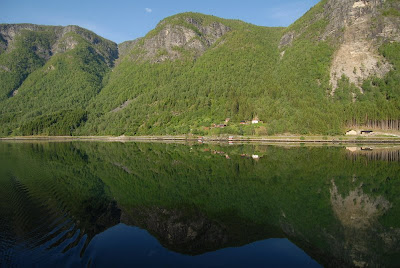History of Norway
From Wikipedia, the free encyclopedia
From around the time of the Roman Empire until about 800 AD, many stone inscriptions can be found, written in Runes. Apparently, the petty kingdoms developed during these centuries.
The period from 800–1066 is referred to in Norwegian history as the Viking age. During this period, Norwegians, as well as Swedes and Danes, traveled abroad on longships, as raiders, explorers, settlers and traders.
By the middle of the 11th century, the Norwegian kingdom was firmly established, although there was still only a very rudimentary administrative framework. After the Black Death Norway entered into a period of decline.
1396–1537 Norway was a part of Kalmar Union.
From 1537 to 1814 Norway was a part of Denmark-Norway.
Denmark–Norway entered into an alliance with Napoleon, with the war leading to dire conditions and mass starvation in 1812. In 1814 Denmark-Norway was defeated in the Napoleonic wars and the king was forced to cede Norway to the king of Sweden in the Treaty of Kiel (January 14). Sweden and Norway adopted a loose union.
This period also saw the rise of the Norwegian romantic nationalism cultural movement, as Norwegians sought to define and express a distinct national character. The union with Sweden was dissolved in 1905.
Norway remained neutral during World War I. During both World Wars, Norway claimed neutrality, but it was invaded by German forces during World War II on April 9, 1940.
Norway joined NATO in 1949. Two plebiscites to join the European Union failed by narrow margins in 1972 and 1994. Norway has been a close ally of the United States. Large reserves of petroleum and natural gas were discovered in the 1960s, which led to a continuing boom in the economy.
From Wikipedia, the free encyclopedia
From around the time of the Roman Empire until about 800 AD, many stone inscriptions can be found, written in Runes. Apparently, the petty kingdoms developed during these centuries.
The period from 800–1066 is referred to in Norwegian history as the Viking age. During this period, Norwegians, as well as Swedes and Danes, traveled abroad on longships, as raiders, explorers, settlers and traders.
By the middle of the 11th century, the Norwegian kingdom was firmly established, although there was still only a very rudimentary administrative framework. After the Black Death Norway entered into a period of decline.
1396–1537 Norway was a part of Kalmar Union.
From 1537 to 1814 Norway was a part of Denmark-Norway.
Denmark–Norway entered into an alliance with Napoleon, with the war leading to dire conditions and mass starvation in 1812. In 1814 Denmark-Norway was defeated in the Napoleonic wars and the king was forced to cede Norway to the king of Sweden in the Treaty of Kiel (January 14). Sweden and Norway adopted a loose union.
This period also saw the rise of the Norwegian romantic nationalism cultural movement, as Norwegians sought to define and express a distinct national character. The union with Sweden was dissolved in 1905.
Norway remained neutral during World War I. During both World Wars, Norway claimed neutrality, but it was invaded by German forces during World War II on April 9, 1940.
Norway joined NATO in 1949. Two plebiscites to join the European Union failed by narrow margins in 1972 and 1994. Norway has been a close ally of the United States. Large reserves of petroleum and natural gas were discovered in the 1960s, which led to a continuing boom in the economy.












0 comments:
Post a Comment